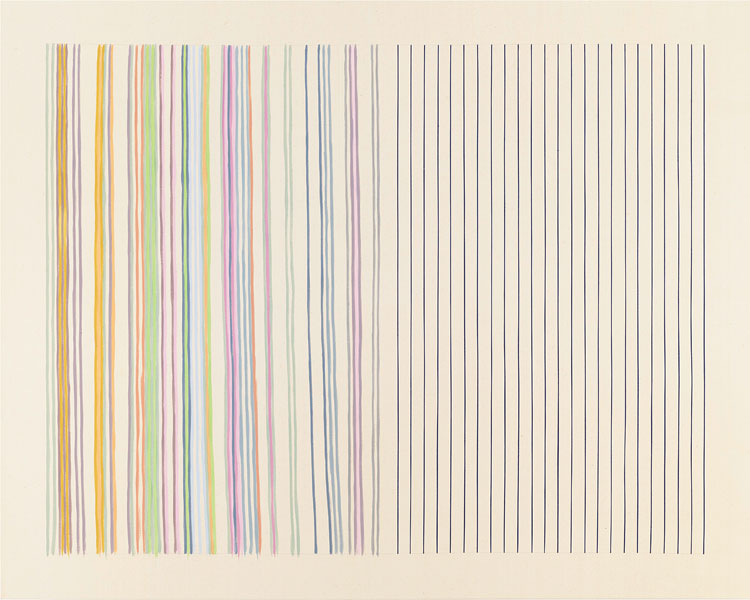The charmingly fallible human hand
After you’ve seen the more stident work of Ian Davenport at Kasmin–he drips orderly vertical stripes down aluminum and steel panels and then gets the paint to go all Dionysian on us near the bottom–walk a few blocks down to Ameringer McEnergy Yoho for something that looks at first quite similar but feels entirely different. Get up close to one of the Gene Davis canvases, and if you look intently enough you’ll see a perfectly straight pencil line just visible through some of the stripes. He used a straight-edge to establish where he wanted the stripes to go, but then painted them without any assistance other than his eye. The line was more of a suggestion than a rule, though most of the paintings don’t show how unsteadily his brush moved down the canvas until you really stand a few inches away. Math and human muscle are at odds in so many ways, but here it’s a good thing: minimalism seems friendly and humble and understated. I walked past these paintings on my way into the back room without paying much attention, but on the way out I stopped and tried to examine how he applied his paint, and it changed my attitude. A line of graphite, and then freehand. No masking tape for this guy. Suddenly, I started liking what I saw. It also helped, for some reason, to read this in the handout, though I really don’t quite understand it:
Look at a painting in terms of individual colors. In other words, instead of simply glancing at the work, select a specific color such as yellow or a lime green, and take the time to see how it operates across the painting. Approached this way, something happens, I can’t explain it. One must enter the painting through a single color.
–Gene Davis

Comments are currently closed.